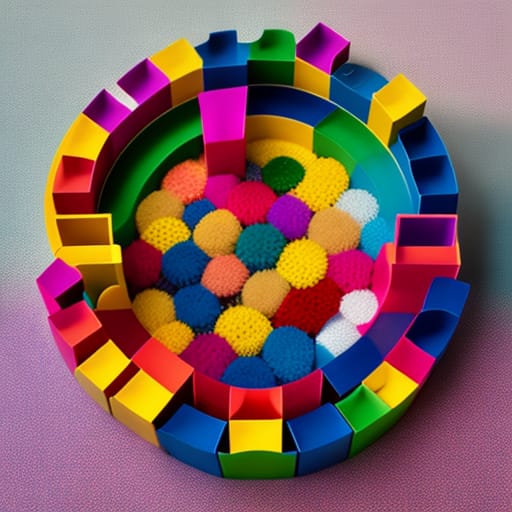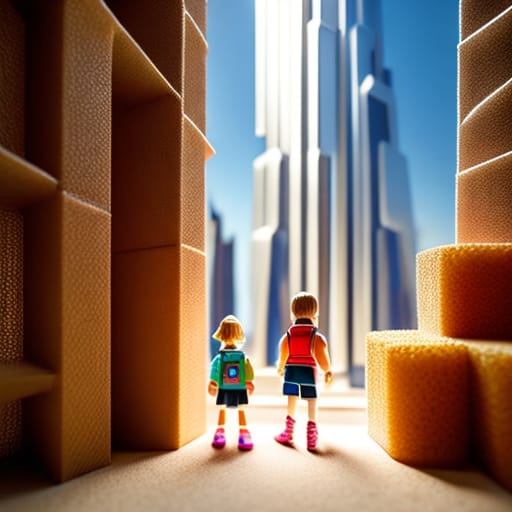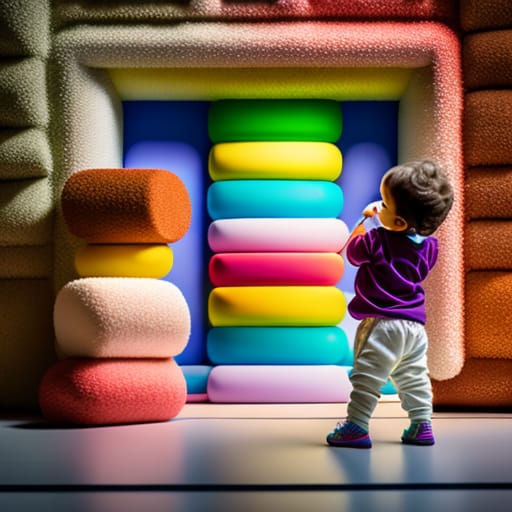Foam play blocks are a classic toy that has endless possibilities for fun and learning for toddlers. With colorful shapes that are perfect for little hands to grab and stack, these blocks build fine motor skills and hand-eye coordination. As your child’s imagination grows, foam blocks become the building blocks of creative adventures.
What Are Foam Play Blocks?
Foam play blocks are oversized, lightweight blocks made of soft foam material. They often feature vivid primary colors and come in a variety of geometric shapes like squares, rectangles, triangles, and arches. Many foam blocks include patterns, numbers, letters, or pictures on the sides as well.
Foam blocks are designed to be easy for small children to handle and manipulate. Their soft texture and flexibility reduces injury if accidentally dropped on little toes. These blocks are ideal for toddlers ages 1-3 years, when sights, sounds, and textures of the world around them are incredibly stimulating.
Developmental Benefits
Playing with foam blocks offers many developmental benefits for toddlers:
Motor skills – Lifting, carrying, stacking promotes gross motor strength. Precision required to balance blocks utilizes fine motor skills.
Spatial awareness – Attempts to assemble structures require understanding size, geometry, balance.
Cognitive growth – Identifying colors and shapes, counting blocks expands cognitive abilities.
Creativity – Open-ended play allows children to build anything they can imagine, supporting creative expression.
Social-emotional skills – Sharing materials and playing alongside other children begins cooperative social interaction.

Types of Foam Play Blocks
There are many varieties of foam blocks designed for toddlers. Some of the most common options include:
Basic Shape Blocks
These classic blocks feature simple squares, circles, rectangles, ramps and triangles without any embellishment on the sides. Available in bright colors, they are versatile for free form building activities.
Brands: Melissa & Doug, Hape, Edushape, Childcraft
Pattern Blocks
Pattern blocks add numbers, letters, pictures, and decorative shapes to the sides of standard blocks. These provide additional visual stimulation and opportunities for learning.
Brands: Imaginarium Giant Pattern Blocks, Playgro My First Numbers Blocks
Interlocking Blocks
Blocks with unique ridges or connectors on the sides interlock together. This enables creation more elaborate structures before they topple over.
Brands: PicassoTiles, FOCO Interlocking Building Blocks
Specialty Sets
Some companies offer foam block sets around themes like animals, transportation, or building sites. These can spark imaginative play scenes.
Brands: PLAYMOBIL City Life Building Block Set, LEGO DUPLO My First Construction Site Bricks
Educational Value
Foam blocks offer a spectrum of educational opportunities beyond just play:
- Learn numbers & counting – Numbered blocks, dot blocks encourage number recognition and counting skills
- Practice shapes & patterns – Repeated exposure to geometric shapes and patterns teaches early math concepts
- Develop hand-eye coordination – Precision required for stacking/building utilizes visual-spatial reasoning
- Explore concepts – Themed block sets introduce colors, letters, animals, modes of transportation
- Cultivate emotional intelligence – Sharing materials and playing collaboratively builds socio-emotional skills
Buying Considerations
Keep the following in mind when selecting foam blocks for your toddler:
- Safety – Ensure blocks are non-toxic with rounded edges for safe mouthing/chewing
- Size – Larger blocks are easier for small hands to grab and manipulate
- Durability – Find blocks that won’t get easily crushed or torn over time
- Child’s interests – Opt for themed block sets to match their fixations and inspire play
- Developments needs – Seek out number/letter blocks tailored for desired academic concepts
- Budget – Balance cost, quality and quantity of blocks to allow varied creations
Fun Ways To Play
Foam blocks unlock endless play possibilities for toddler imaginations. Here are some ideas:
- Build towers as tall as you can, then dramatically knock them down!
- Make a road for toy cars to drive on. Add signs and buildings along the path.
- Construct a house with different shaped “rooms” and special spaces for family members.
- Design artwork by arranging blocks in patterns and images.
- Line blocks up end-to-end and count as high as you can go!
- Sort by color, shape, size, numbers – learning key differences.
- Play “I Spy” hunting for blocks of a certain color or shape.
- Invent your own unique structures – let your imagination run wild!
Add toy figures, cars, or even stuffed animals to make block structures come alive with stories! Encourage friends or siblings to build alongside you to share the fun.

Maintaining Foam Blocks
Foam blocks stand up well to energetic toddler play, but still require some care.
- Wipe dirty blocks periodically with mild soap and water
- Check blocks for rips/tears and discard damaged pieces
- Store neatly in bins to avoid losing pieces and prolong use
- Replace blocks with bite marks/excessive punctures for safety
- Allow blocks to fully air dry if cleaned or exposed to moisture before storing
With proper maintenance, high quality foam blocks provide years of fun learning.
Final Takeaways
➢ Foam blocks build fine motor skills and hand-eye coordination critical for early development.
➢ Playing sparks cognitive growth in areas like colors, numbers, shapes, and counting.
➢ Variations like pattern blocks add learning opportunities beyond basic building play.
➢ Open-ended creative potential stretches children’s imaginations and social engagement.
So watch the magic unfold as toddlers explore problem-solving, spatial reasoning, and collaborative play! Foam blocks set little minds free to gain confidence in their growing abilities. Delight in what they show you they can create!
Frequently Asked Questions
What age are foam blocks appropriate for?
Foam blocks are an ideal toy for children ages 12-36 months. Their lightweight material and ease of grasping makes them perfect for developing fine motor skills in toddlers.
What skills do foam blocks teach?
Foam blocks help toddlers build critical cognitive, social-emotional and physical skills. Playing teaches color and shape recognition, spatial reasoning, counting, coordination, balance and creativity.
How safe are foam blocks?
High quality foam blocks from reputable brands feature BPA-free and non-toxic materials with smooth, rounded edges for mouthing safety. They pose little risk if used properly under adult supervision.
Should I get basic or patterned shape blocks?
It depends on your focus. Basic shape blocks allow for more creativity, while numbers, letters and decoration on pattern blocks provide more early learning opportunities. Mixing both types adds variety.
How can I integrate foam blocks in educational activities?
Incorporate blocks into counting games, shape identification, sorting/patterning, building challenges and imaginative play scenarios. Create learning opportunities from simple structured play.
How do I maintain foam blocks properly?
Periodically clean dirty blocks with mild soap and water, allow to fully air dry before storing. Check pieces for damage after vigorous use and discard excessively worn blocks to prevent safety hazards.
So watch the magic unfold as toddlers explore problem solving, spatial reasoning, and collaborative play! Foam blocks set little minds free to gain confidence in their growing abilities. Delight in what they show you they can create!
